I was home in Florida a few weeks ago. My goals that week were pretty simple: spend as much time as possible with my two teenage boys, eat a bunch of Cuban food, and generally try to relax in the midst of government shutdowns. Oh, and I needed to see some old friends who also happen to be gopher tortoises.
I’ll explain.
Several years ago I had the opportunity to move back home to Florida after two hellish years in graduate school at the University of Minnesota. I was miserable being so far away from my kids and desperate to feel like I was moving forward with at least some semblance of life. A teaching job came open in Highlands County, Florida where my boys lived with their mom at the time. Now, if you’ve ever been to Highlands County, you’ll know it’s one of the poorest and most sparsely populated counties in the state.1 Mostly the county is home to large herds of beef cattle and citrus groves. And there’s a significant population of retirees in Sebring, the county seat. Frankly, there’s not much to do or see in Highlands County.
I was living in Lake Placid, which is somehow even smaller than Sebring but at least has a Publix, meaning that this hamlet of 2,514 people had better grocery shopping than the entirety of Colorado. But I digress.2 So I didn’t have a lot to do aside from write a dissertation, question my life choices, and eventually start Historians At The Movies.
But one of the things Highlands County does have is this amazing ecosystem commonly called the Florida scrub. I know when most people think about the state they imagine Walt Disney World or sandy beaches, Napoleonic governors in little white galoshes. But the scrub is in my mind one of the most beautiful things about the state, and something worth saving. Scrub habitat is defined by its sandy soils which aren’t really nutrient rich. It’s a hard life in the scrub, so the plants and animals that survive there are some of the hardiest in the country. You get live oaks and sand pines and saw palmettos and you have fire ants and black bears and scrub jays. And you have gopher tortoises. So many gopher tortoises.
Gopher tortoises are these amazing animals. They are like all tortoises, turtles. And they’re related to other tortoises in North America such as the Mojave desert tortoise and the Texas tortoise and a few others. They get their name from the long and deep burrows they dig out of the sand, which can extend as far as 40 feet back and 10 feet deep. They’re also what you call a keystone species in Florida, meaning that the burrows these animals make are home to over 360 other species of animals. All sorts of creatures take refuge in their burrows, from bugs and snakes and lizards and frogs to mammals like foxes and rabbits and skunks and opossums.
They’re not immune from predation. As you can imagine, lots of critters like to gobble them up when they are young and their shells have yet to harden. And based on my research for my book, they’ve long been tablefare for Floridians. Seminole and Miccosukee ancestors consumed them into the 20th century, and they were even known as “Hoover chickens” by the state’s residents during the Great Depression. In short, they’ve always been an important part of the peninsula’s ecosystem.
During the day, they come out of their burrows to take in the sun and munch on the native vegetation. Unfortunately much of these grasses reside near the many roads of Florida, which are also the perfect places to warm up after a long night in the burrow. And that’s where I come in.
I get my love of animals from my mom, who does not know the meaning of “stray” when it comes to dogs or cats. Nor does she know the meaning of “don’t stop to move a box turtle across the road.” It’s one of my favorite things about her. And it’s something that I also started doing, though my preference for strays was limited to brunettes in my 20s. Moving on.
So while I was living in Lake Placid, I got to know the resident gopher tortoise population quite well. I literally moved hundreds of them across the road, and tagged each one virtually using a citizen scientist app created by the Florida Department of Fish and Wildlife. This app became important because development threatens the animals’ habitat and the tort is protected in Florida, so you’re not supposed to touch them unless moving them from harm.
One of my favorite things about gopher tortoises are their perennial bad attitudes. You’d think they’d be thankful for all my work saving them from Chevy Silverados and Buick Skylarks, but nooooooo. They almost always hiss at you when you have to pick them up and I’ve been pissed on and shit on by more reptiles than you can imagine.3
But I really came to love them and took a lot of pride posting about each one—some I knew so well they had names—when I encountered them. Long before I was the movies and history guy on social media, I was actually the turtle guy. And I won’t lie, I miss my friends.
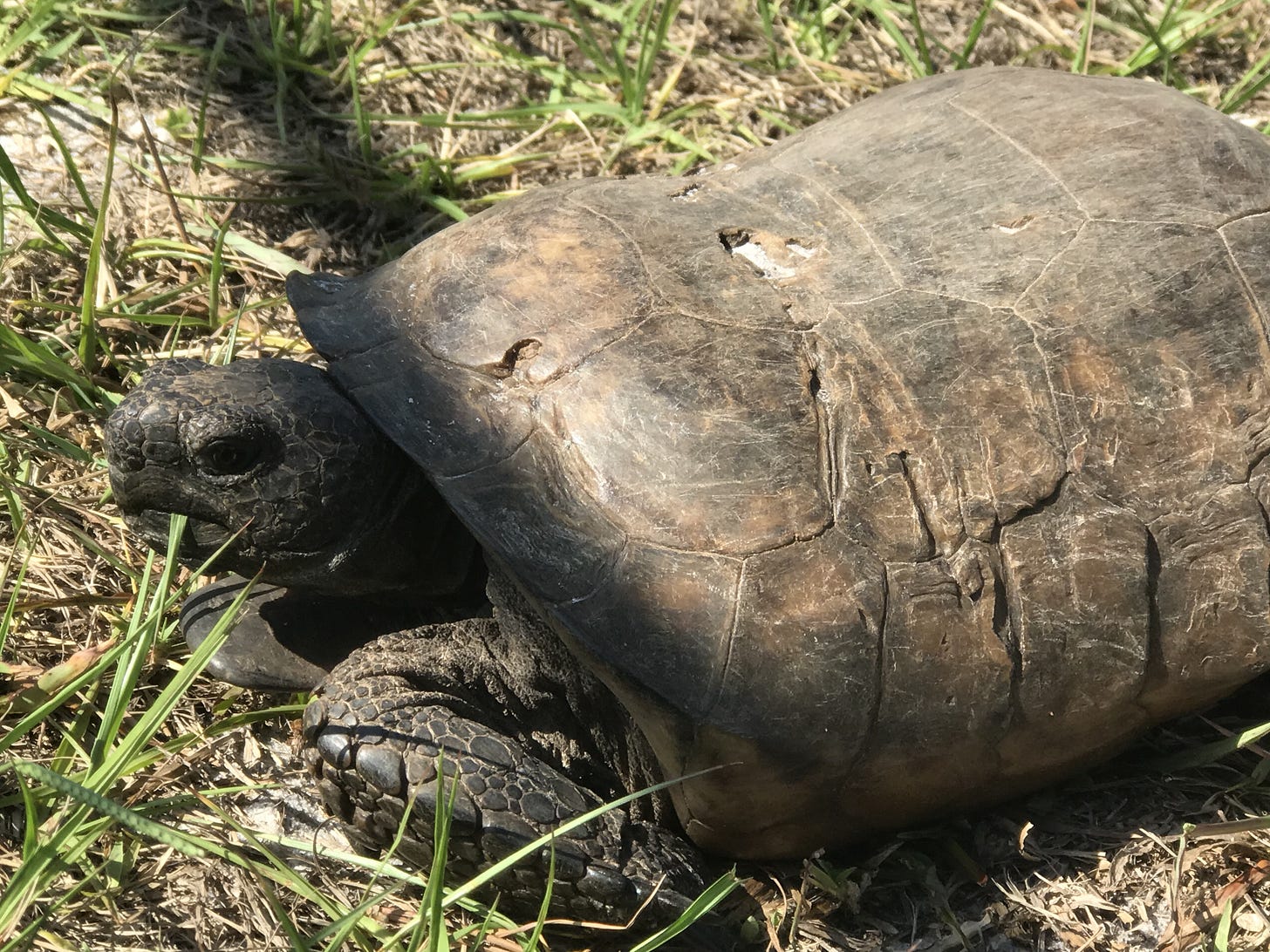
So when I returned to Florida last month, I knew I wanted to see some tortoises. But where? I never lived in Tampa so I didn’t have any hotspots to reliably choose from. Fortunately there was a wildlife preserve near my boys’ place that looked to host a healthy population and while the fellas were at school I made my best Steve Irwin impression and headed off into the scrub. It took a little bit of work as I identified burrows, looked for their residents, and listened closely to the underbrush for what can only be described as reptilian understory assault tank.
Eventually I spied a tortoise basking in the sun about 150 yards away and sprinted in my flip-flops across a parking lot, road, and finally a field to grab my first shellfie in over a year.
It’s odd to express the elation of loving something that is kind of perpetually annoyed at you, though those of you with teenagers will likely understand. I spent the next couple hours walking through the scrub, looking and listening for the critters, knowing it was going to be a long while before I saw them again. And for a little while, I was able to not think or stress about my job and whether or not I’d be allowed to keep it. Like so many of us, I went to the woods to find myself, if just for a minute.
***
I’m writing all this actually with a tinge of sadness. One of the frustrating things going on in Florida is the rampant overdevelopment of the peninsula’s wild and beautiful spaces. Under Ron DeSantis the bulldozers have moved in like locusts, devouring everything in their wake. And those bulldozers quite often entomb gopher tortoises in the earth where they eventually suffocate underneath new construction of the latest convenience store or residential complex. It’s maddening.
There’s been some pushback. Last year Governor DeSantis tried to slide by construction of golf courses and pickleball courts on many of the state’s pristine parks.4 These monstrosities would’ve wrecked the natural habitats of numbers of threatened and endangered species including not only the tort, but scrub jays, indigo snakes, and the critically endangered Florida panther. Fortunately a coalition of nature enthusiasts across the political aisle banded together and were able to stop the development plans, but only barely. It’s clear that the governor and his heir apparent, his wife Casey (expect her to run after Ron terms out) have their eyes on a legacy of development that will continue to endanger what makes Florida Florida.
One of my great frustrations is that when I voice my love of Florida, people will sometimes say something to the effect of “ew Florida. Why?” It’s for a lot of reasons, but among them is because of the many different ecosystems and animals it boasts. They are worth protecting. They are worth saving.
In the meantime, I’ll be here in Colorado, which doesn’t have a lot of tortoises. But you know what we do have? MARMOTS. And these furry little bastards are annoyed by us, too. I think I have some new friends.
Jason
Hey, thanks for being here. Wanna help keep the content coming? You can offer a paid subscription below. Thanks for being part of this community.
As an example of Florida’s dedication to education, I was making a grand total of $34,000 per year as a high school history teacher with a Master’s Degree. It was not awesome.
There’s also exceptional bass fishing in the lakes of Highlands County, along with numbers of alligators.
After much thought, I removed that fact from my online dating profile.
https://www.tampabay.com/news/environment/2024/09/10/florida-state-parks-development-golf-courses-desantis/







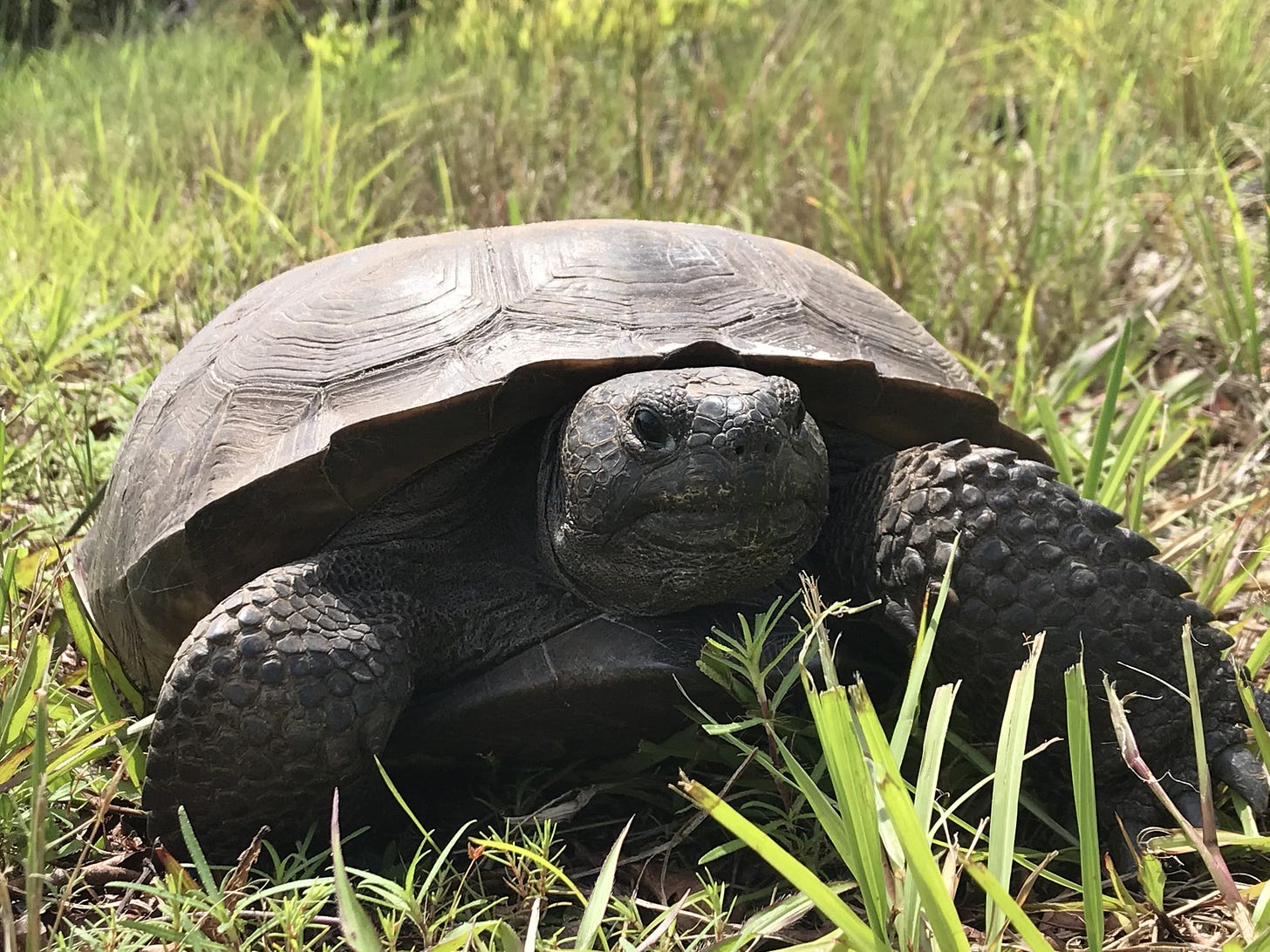
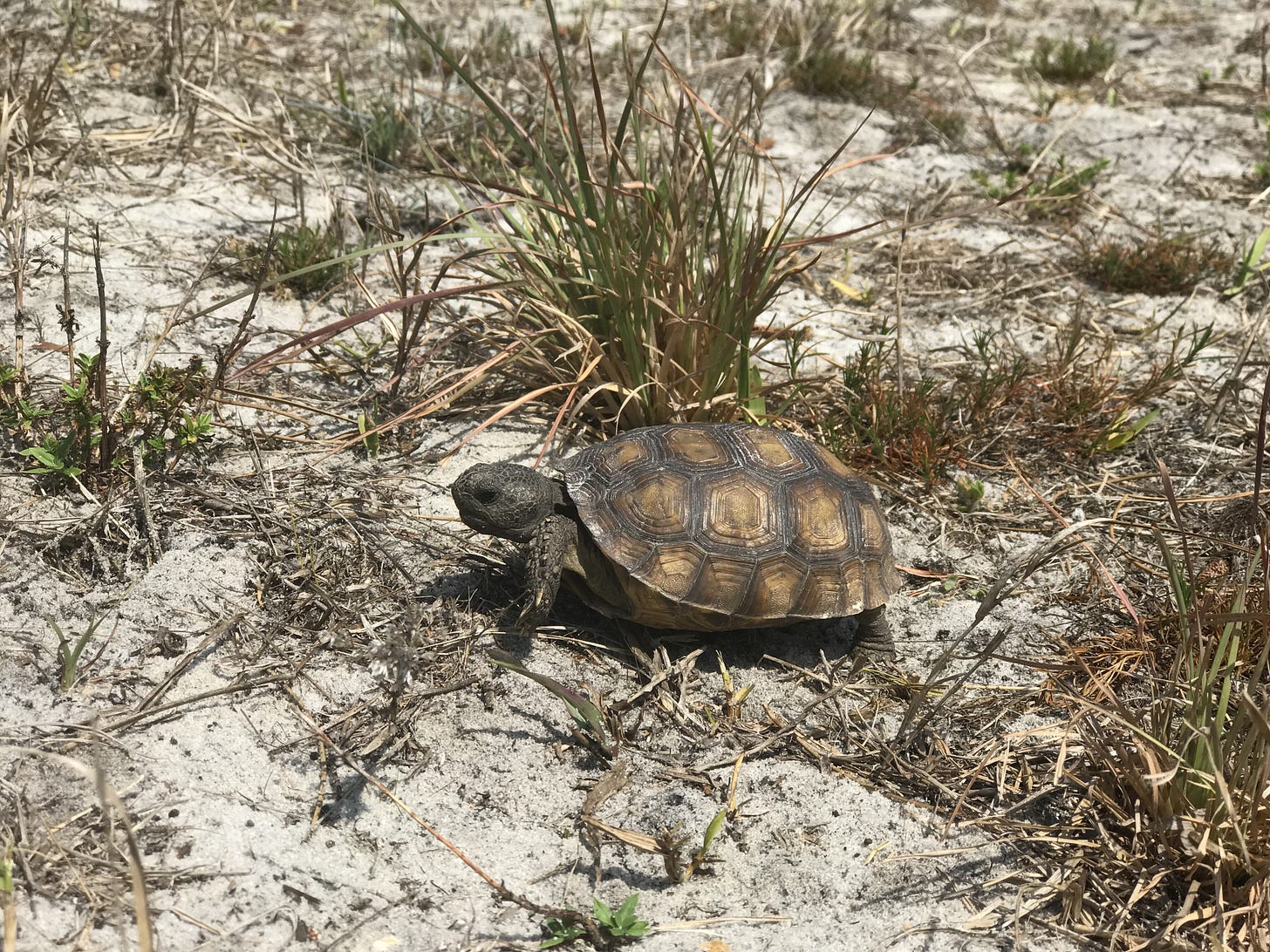
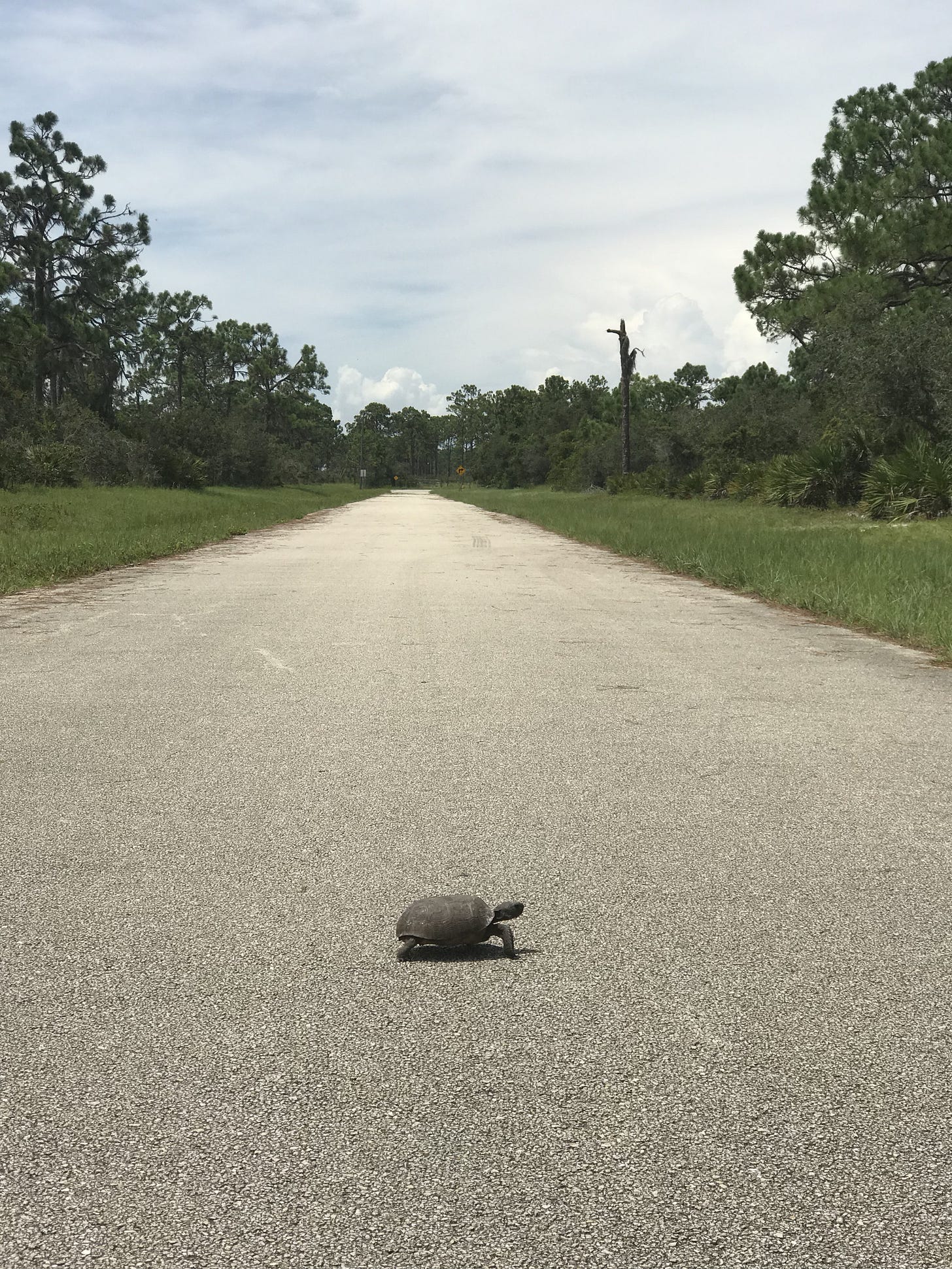

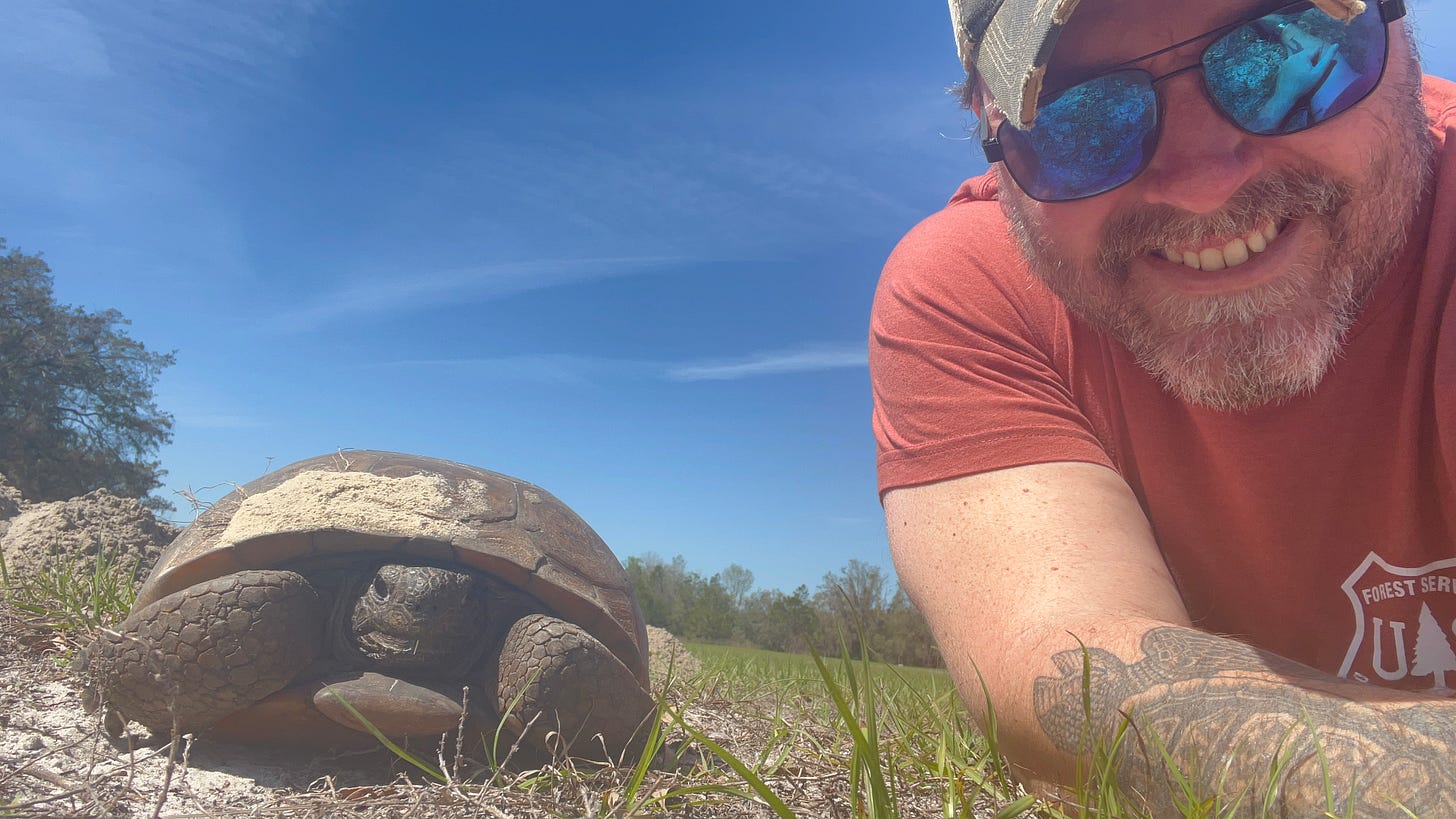
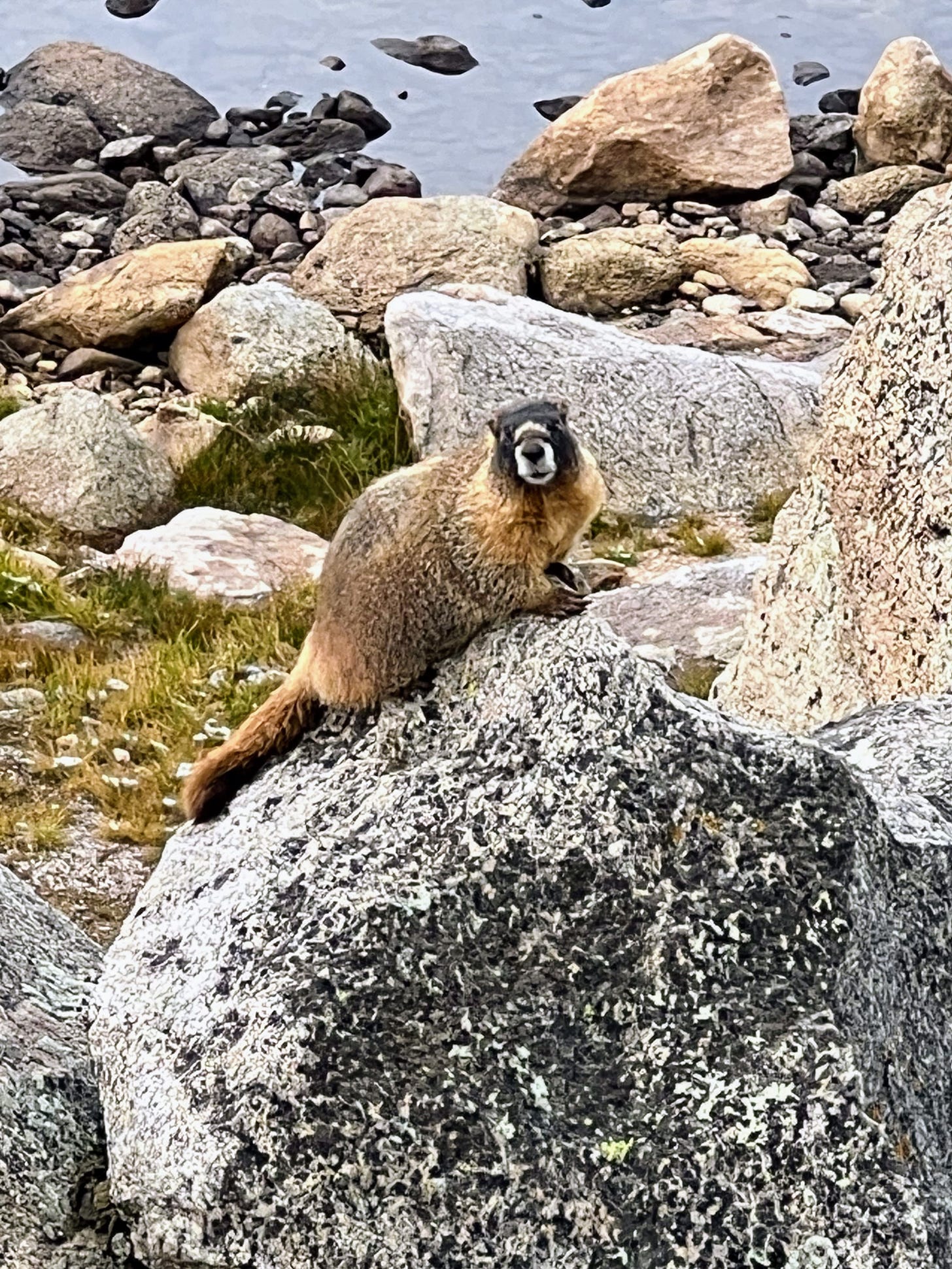
Thanks, Jason. I love these critters too.
I appreciate your love of Florida.
I spent a significant chunk of my childhood in central Florida. My grandparents lived in Winter Haven and for half my childhood I spent 3-4 months a year with them. I still have family in Orlando that I don't get to see often enough. Some of my favorite memories come from the summers I attended at a day camp outside of Lake Alfred. Fishing, swimming, and horseback riding through the Florida scrub. There's a part of that region that will always be "home" to me.